Welcome to the first Mad Level Manager tutorial. It explains how to create your first level select screen with the most basic configuration possible. This is the only small part of what Mad Level Manager can actually do. If you want to know more, please read the overview page or look at the other documentation pages.
Creating Level Configuration
First thing you need to do is to create Level Configuration. This will be the work flow of your game. It will determine both the selection of the scenes which will be loaded first and the order of your playable levels. To create one, click on the Create button in your Project view…

…and then select the Level Configuration option.
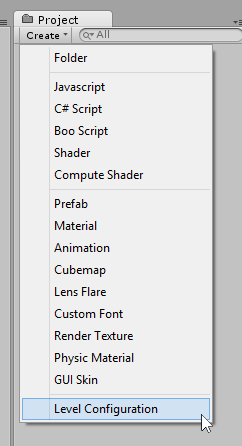
The New Configuration asset will be created.

Let’s rename it to “My First Level Configuration”.

Now look at your Inspector view. You should see that there’s one important error that should be immediately fixed.
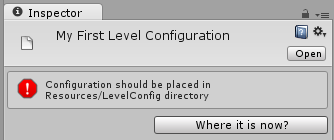
This message means that the Level Configuration asset that we’ve created just now must be located under the declared directory. That’s because Unity3D treats differently everything that lies in the Resources directory.
This is a tutorial, so let’s make the directory structure look like this:
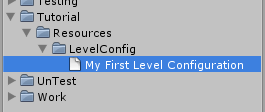
Creating Level Select Scene
Before continuing with your levels configuration, we need to create and save a scene that will be used to select playable levels. Let’s create it now:
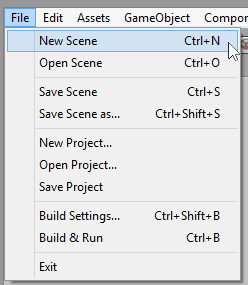
And save it without any modifications…

…in new Tutorial/Scenes directory as Level Select Scene.
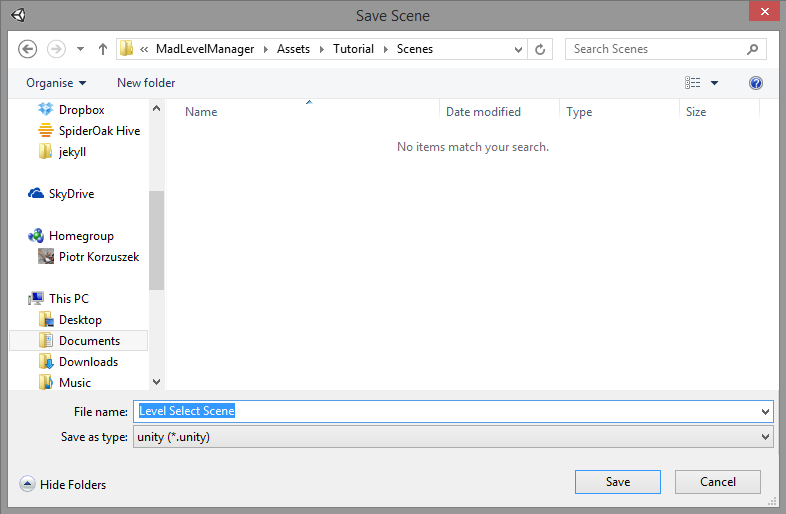
Now your Project should look like this:
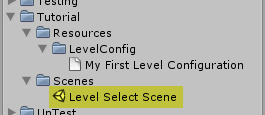
Configuring Levels
Make sure that you have My First Level Configuration selected and take a look at the Inspector.
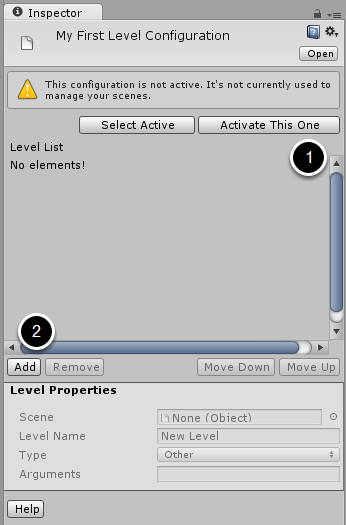
On the top you can see that this newly created configuration is not currently active. This means that it won’t be used to manage your level work flow at the current state. Let’s make it active by clicking Activate This One (1).
Let’s add our first level by clicking on the Add button. The new level will appear:
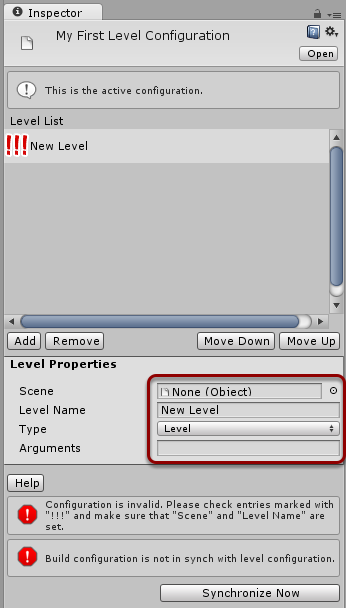
See three exclamation marks next to New Level on the list? This means that this level configuration is invalid and your attention is needed. It is a common thing because we’ve just created this level hence it needs some initial setup.
What we need to configure for the first level are these fields:
- Scene – here you should place your Level Select Scene that we’ve created earlier. This is a place for a scene object. Just drag & drop your scene here.
- Level Name – name your level “Level Select”, so you can easily refer to it later.
- Type – set the type of your level. All levels that are not actual game levels should be set to Other.
- Arguments – if you want to pass arguments to your level (and read them later), you can do it here. We will leave this one empty.
Your configuration should now look like this:

Have you noticed that some errors are gone? Don’t worry about the synchronization error. This means that something in the level configuration has changed and the synchronization procedure is necessary to make everything work as expected. Unless we don’t finish our configuration we won’t need to synchronize it, because it will simply pop-up again.
Now we will create two playable levels. As a scene we will use MadLevelTester that is placed in Mad Level Manager/Examples/Scenes. This scene imitates a playable level and allows you to proceed to the next one and return to level select screen.
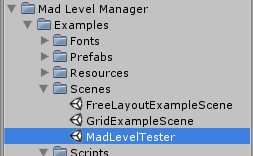
Create the second level just like you’ve created the first one by pressing the Add button, and then set values to:
- Scene – MadLevelTester
- Level Name – First Level
- Type – Level
- Arguments – first
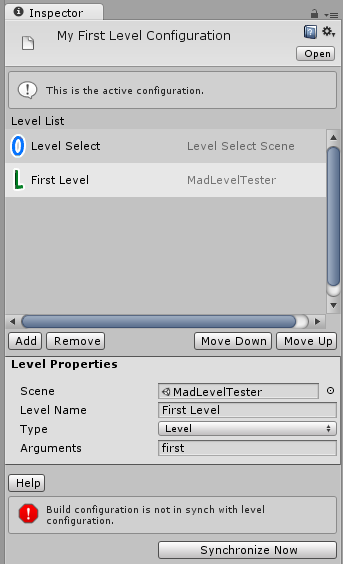
In a similar manner, create the third level that will be the second playable level with values:
- Scene – MadLevelTester
- Level Name – Second Level
- Type – Level
- Arguments – second
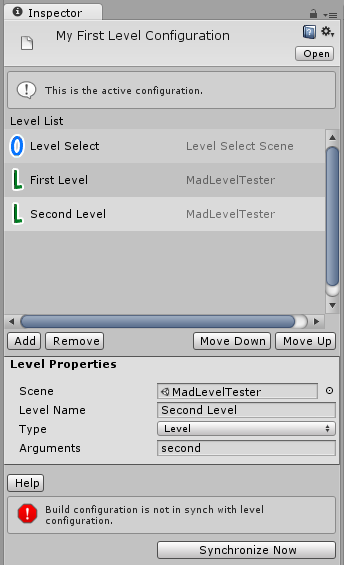
Now when you’re done with configuring the levels, it’s time to synchronize our build configuration. Click the Synchronize Now button:

You can take a peek at what it did to your build configuration (File → Build Settings or Ctrl + Shift + B). Level Select Scene will be launched first, and MadLevelTester is placed as a second scene in the build.
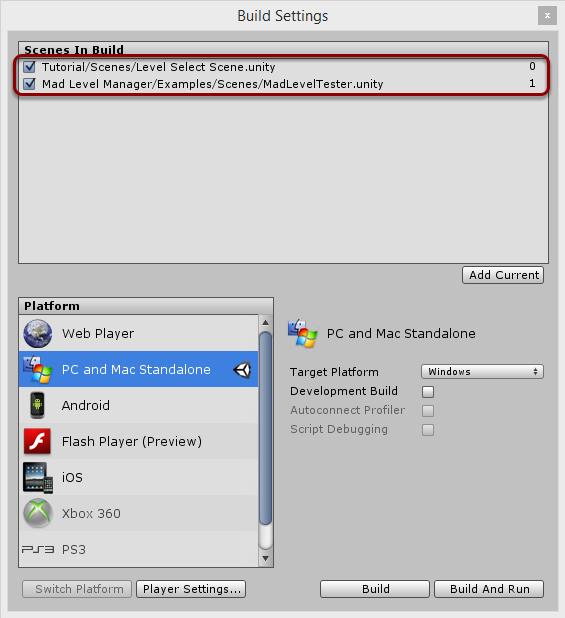
Configuring Level Select Screen
Be sure to have our Level Select Scene open. We need to make it completely clean, hence locate the Main Camera in the Hierarchy…

…and delete it.

Next, from the main menu select Tool → Mad Level Manager → Initialize.
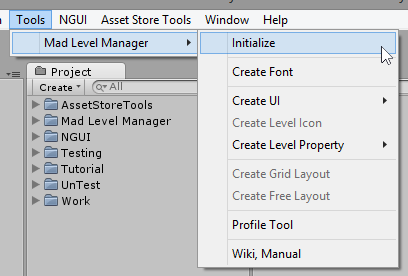
The Init Tool will open:
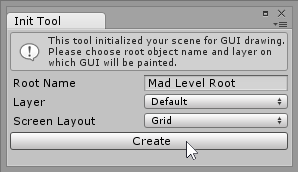
Here you can setup a few things but we won’t change anything since we want to create the Grid layout. Click on the Create button to proceed, and your grid should appear on the screen:
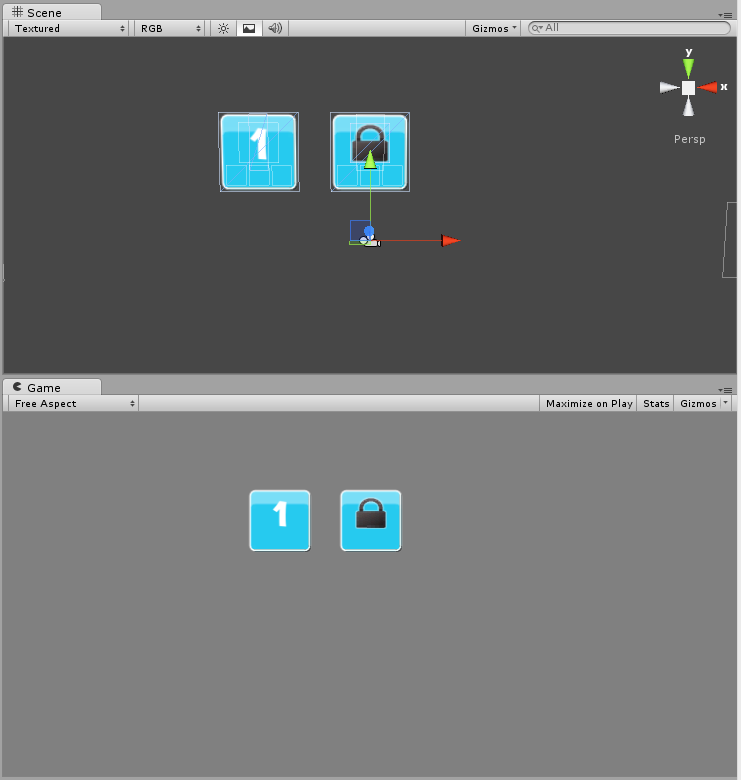
And that’s it! Now we can test if everything is working as expected! Hit the Play button:

Then select the first level in your Game view.
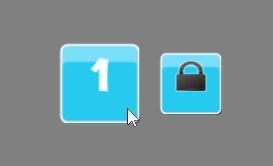
The First Level with the argument first will be loaded.
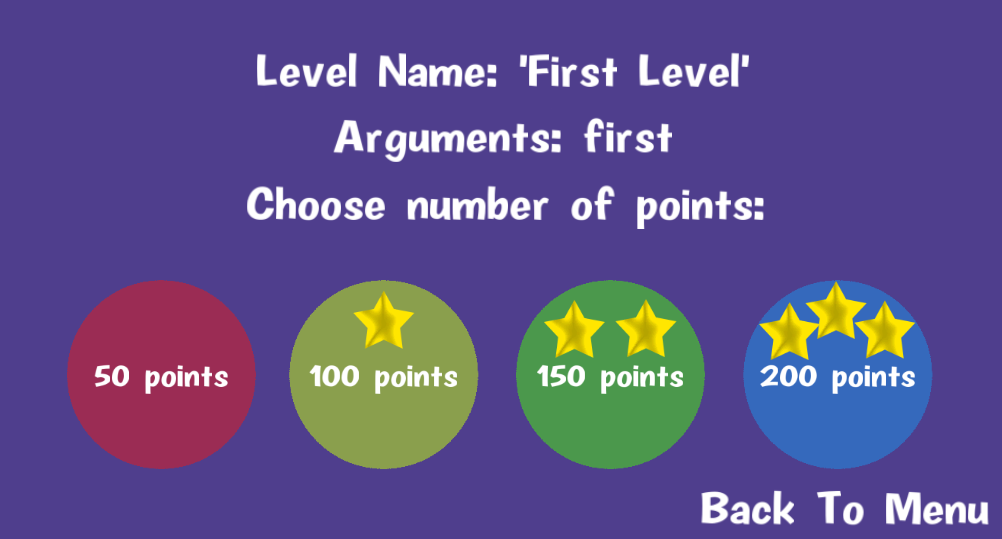
Now you can try to assign stars, so go back to the level select screen, and play with Profile Tool.
This concludes this tutorial. Be aware that what you’ve learned here is just a small portion of what you can do with Mad Level Manager. Please look at the other documentation pages to discover how to customize the look of your level select screen, and how Mad Level Manager can help you manage your levels and game progress!
